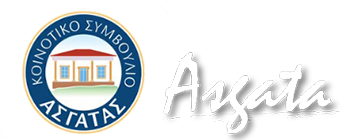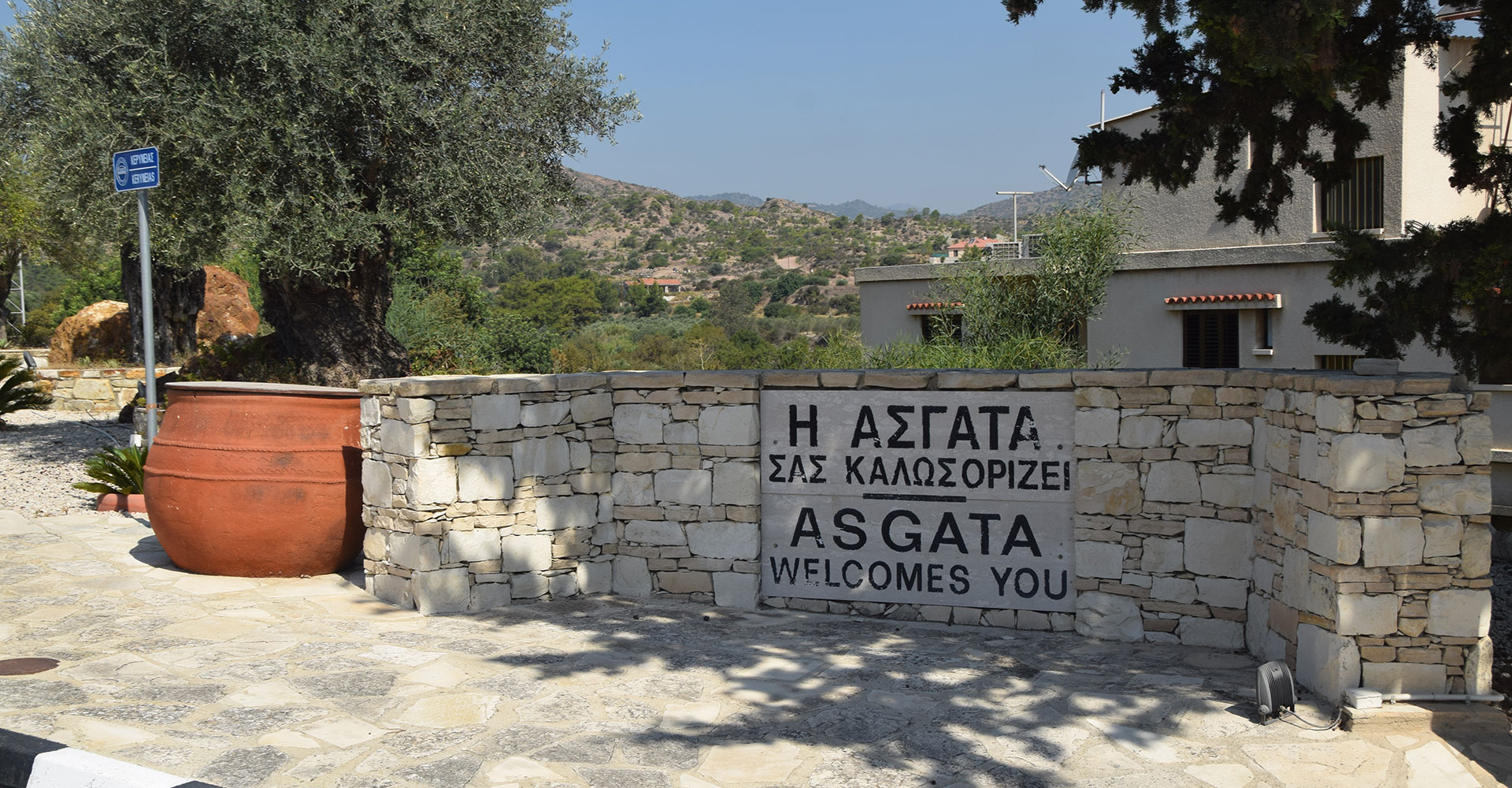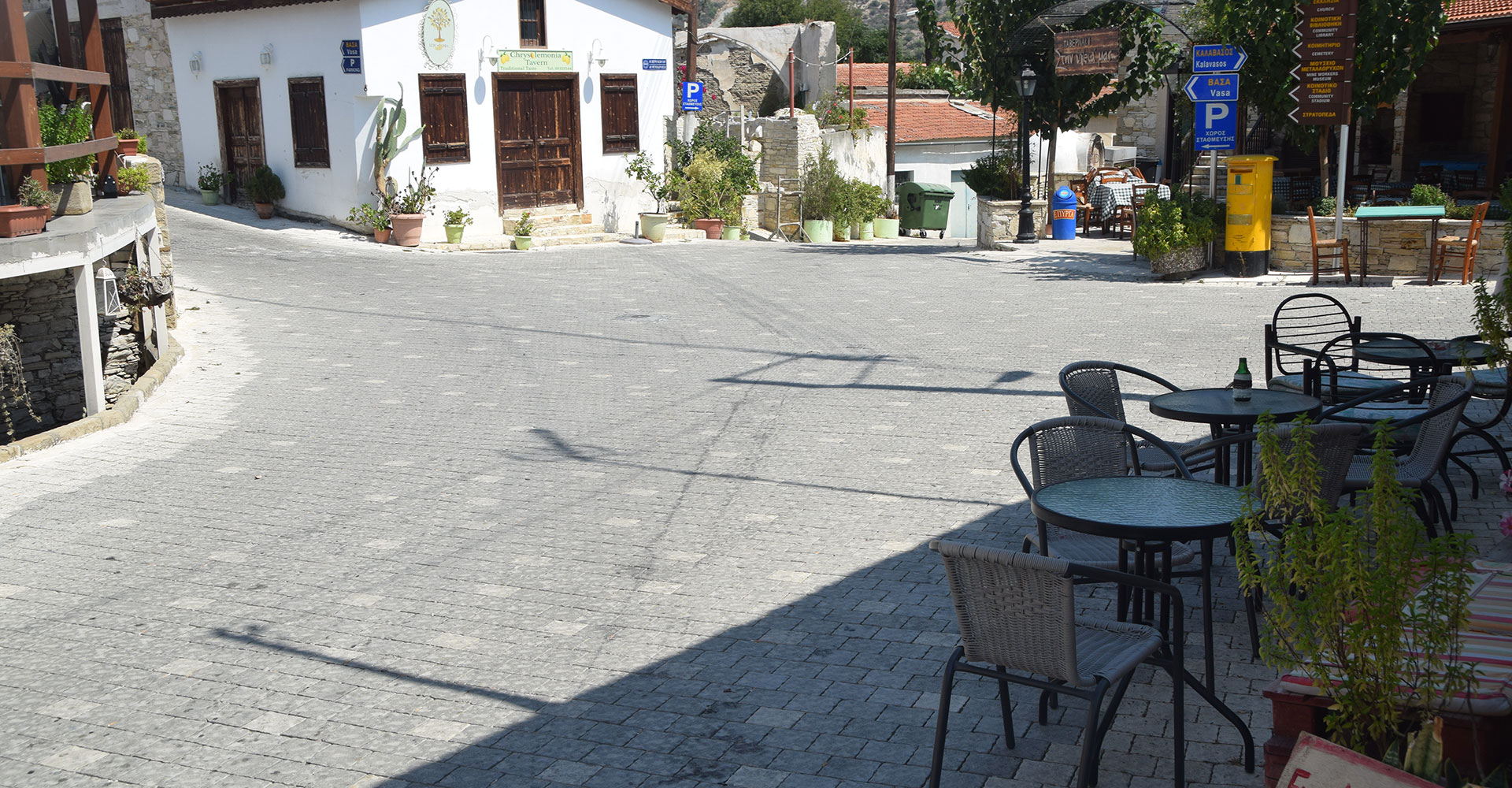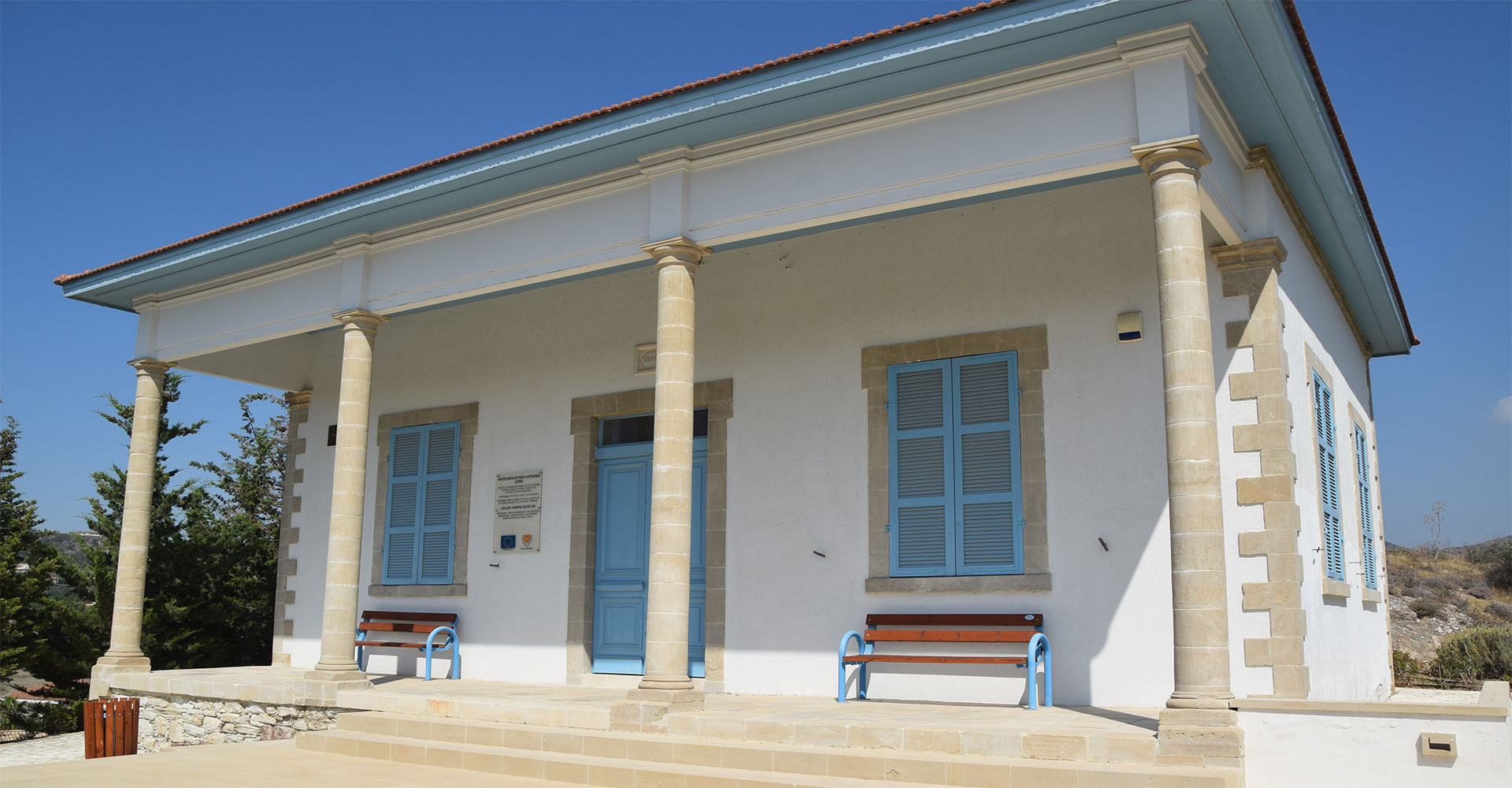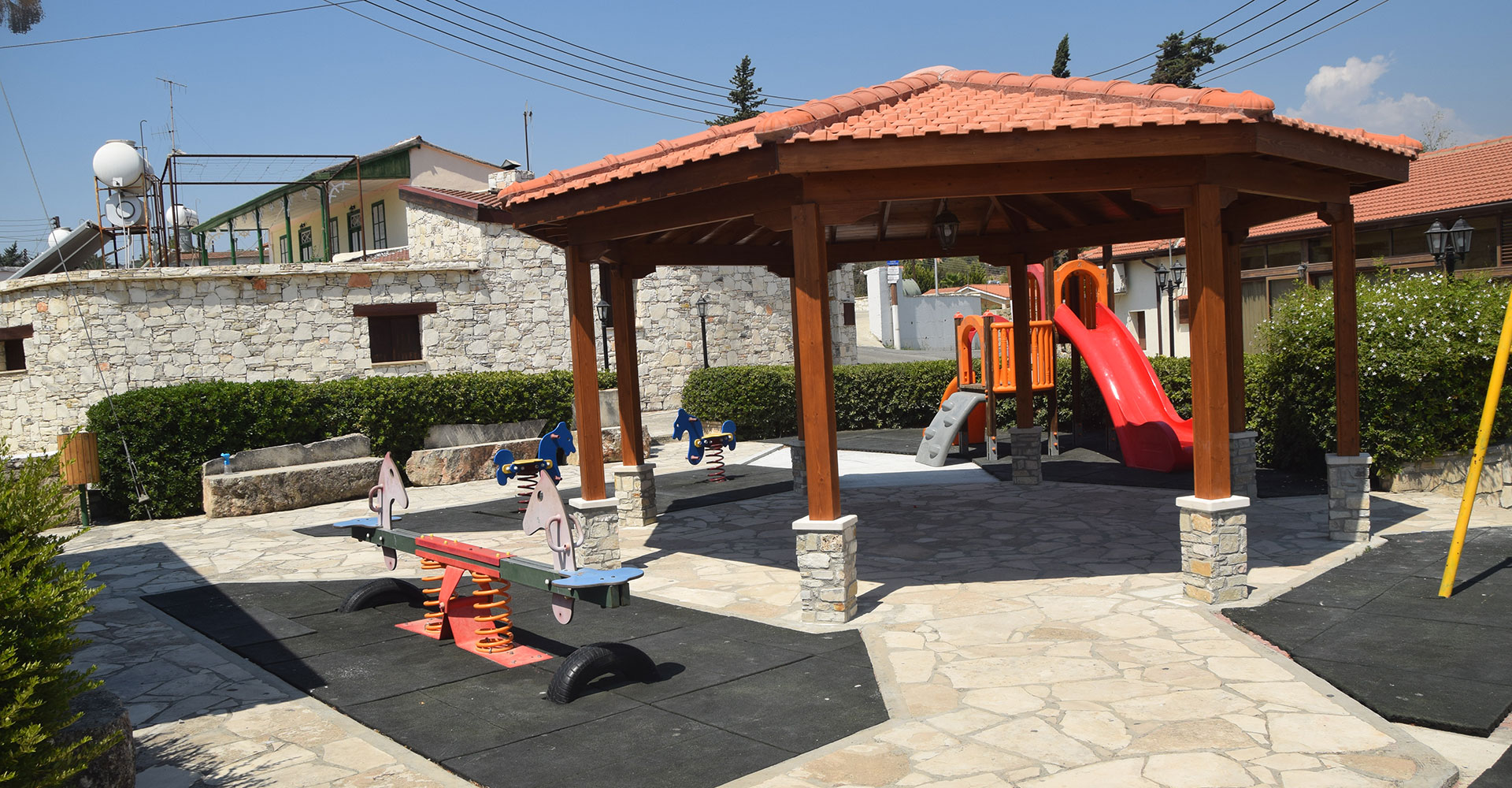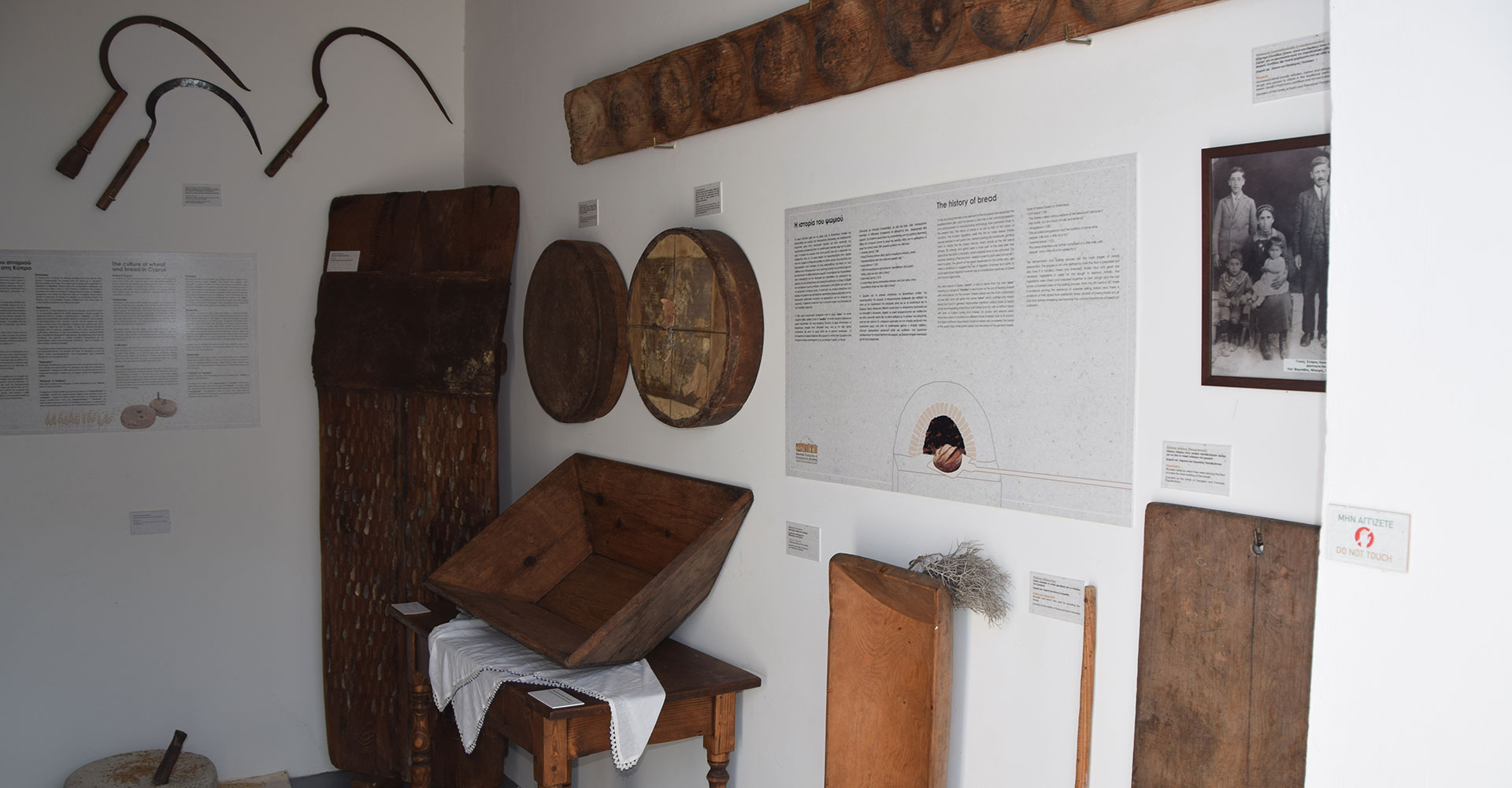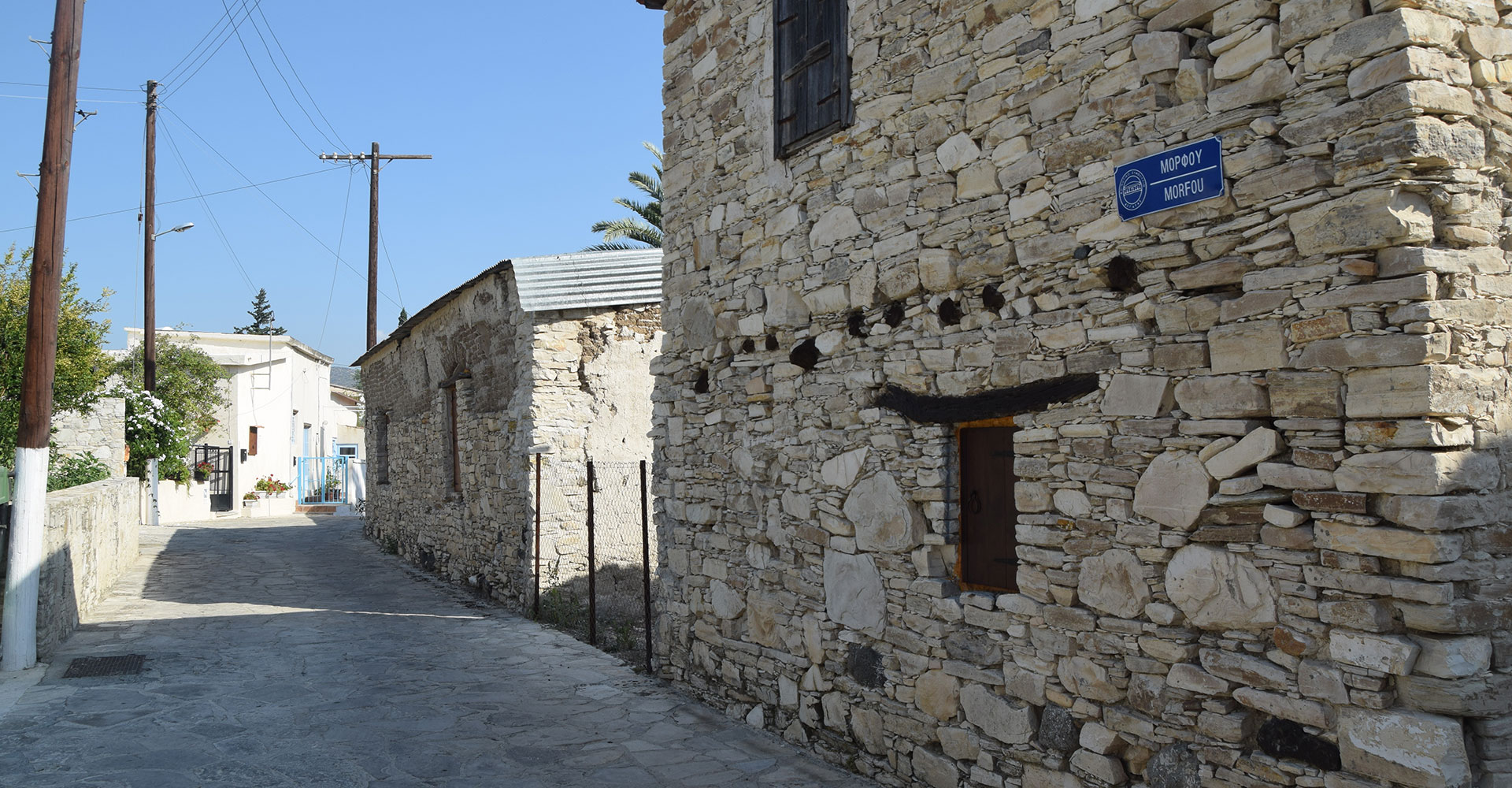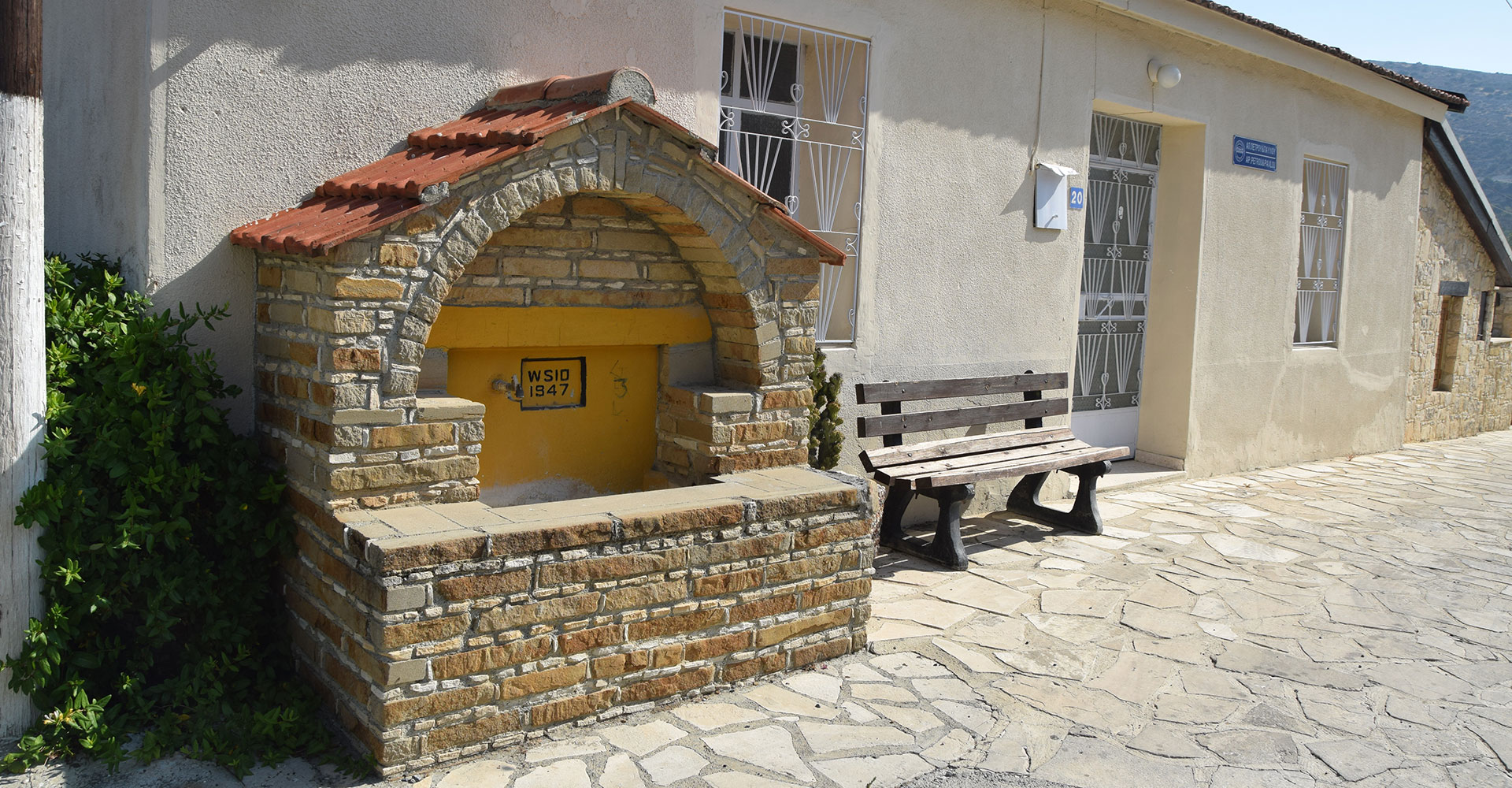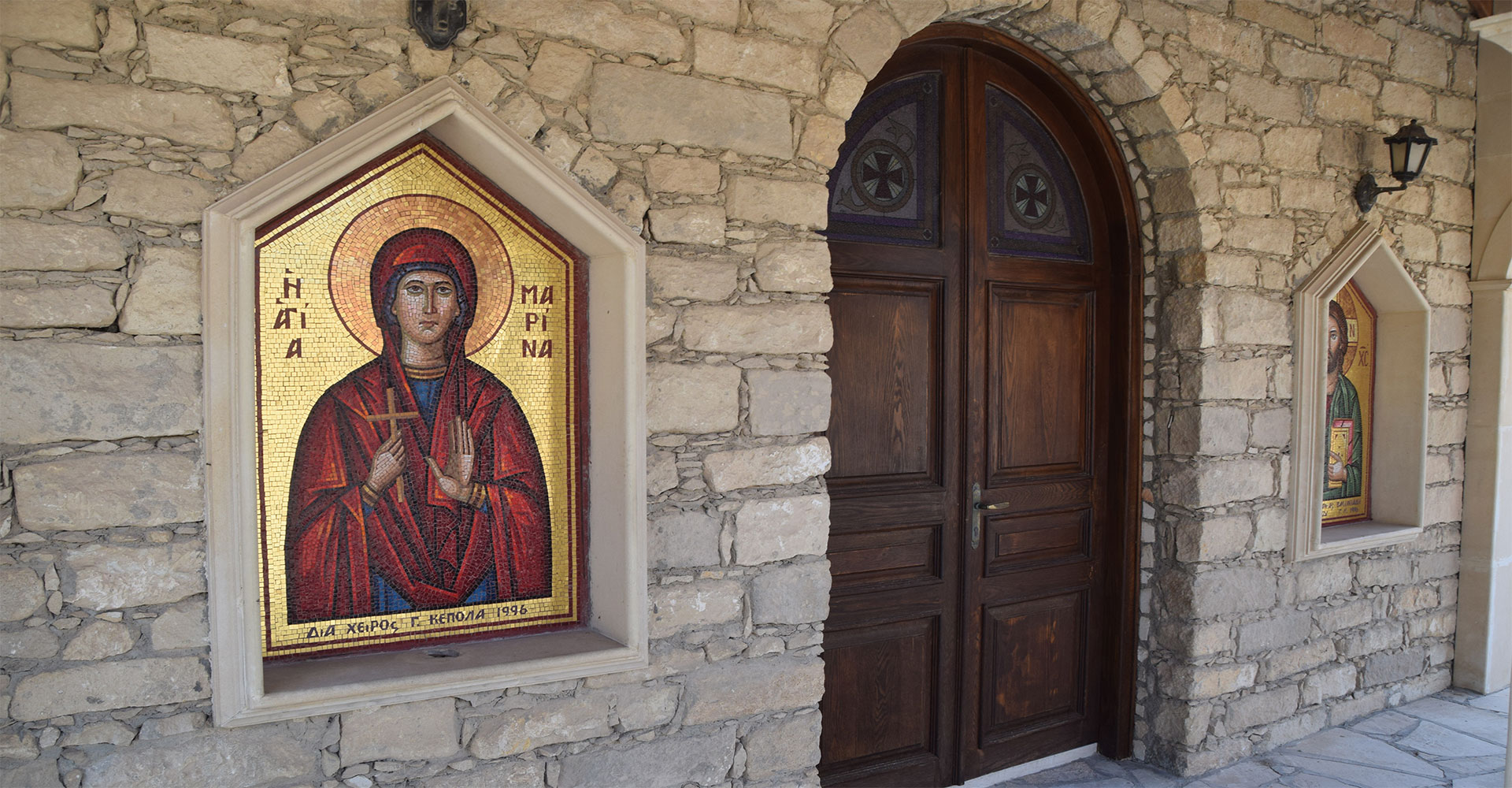History
ASGATA – The village and its history
Asgata is located in the far east end of the Limassol District, approximately 26 km from the city. It is built in the middle of a valley, on an altimeter of 190 m. The village is surrounded by mountains; mount Kokkines and Vouppa with an altimeter of 370 m towards the north, mount Monodentri with an altimeter of 340 m towards the south, mount Teratsotos with an altimeter of 458 m towards the southwest, mount Troulloi with an altimeter of 339 m towards the west and mount Gerakarkos with an altimeter of 361 m towards the east.
The biggest part of the area, which consists of umbra and lime soil, is mostly used for the cultivation of various vegetables, pulses, potatoes, olives, carobs, almonds and pomegranates. Towards the west, the north and the northeast dominate olive trees, carobs, as well as pines which create magnificent images of a sparse pine forest combined with the low vegetation including mastic trees, terebinths, cistus trees, thymes, lavender and spiny brooms.
Asgata has always attracted the interest of nature researchers, both for its mines and its flora, due to the huge variety of wild flowers flourishing in the area. In fact, a particular area in the southwest of the village has been included in the Natura 2000 network, whereas another one has been designated as zone “Z”, meaning an environmental protection zone.
The village used to be of a compact concentrated type. However, today it has expanded towards different directions where modern houses, villas and holiday homes have been constructed. Traditional residences can be found in the core of the village, several of which have already been gentrified. The square of the village and its traditional neighbourhood known as “Kato Geitonia” compile a beautiful scenery with old gentrified residences with internal yards full of flowers, jasmines and bougainvillea.
Asgata is first mentioned in the Holy Bishopric of Kiti manuscrıpts towards the end of the 18th century (1777), but it is certain that the village had existed long before that, since Stefano Lusignan included a relevant reference in his work “about Cyprus (peri Kyprou)” published in 1573. Apart from that, the existence of small housings and ancient mine tunnels reveal just how ancient the housing was.
The most probable version regarding the origins of the name Asgata, which is recorded by Simos Menardos in his work “toponymical and folk studies” supports that it derived from the estates of Askas (the person who used to make wine containers called “askia”). The Greek ending “– ata” is used in several areas of Greece and denotes ownership and thus there are the names Antonata, Voutsinata, Andreata and Askata (meaning the estates of Askas), which was then converted to Asgata as it sounded better.
Another version which is recorded by Costas Pyrros without mentioning his sources, claims that long before the Attica dialect replaced the Doric dialect, the compound name Asgata derived from the Doric words “As” and “Gatas” (Greek Meaning = to the farmers), since the area was inhabited by farmers to whom people went in order to buy goods.
The population of Asgata, according to the last census which took place in 2011, was 417 residents, while today there are approximately 450 residents. The biggest population was recorded back in 1946 with 704 residents.
Asgata can be reached via the following three roads:
- From Limassol, via the motorway leading from Limassol to Nicosia by taking the exit to Moni. (Distance 9 km)
- From Kalavasos (Distance 6 km)
- From Kellaki, via Sanida and Vasa (Distance 12 km)
Source: Antonis Kavazis (Asgata – History and Memories)

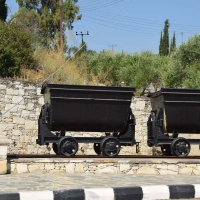
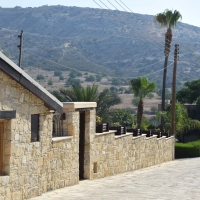
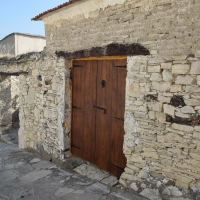
Sights
In general, Asgata is a village which attracts a lot of local and foreign visitors. It is located just 20 minutes from the city, 15 minutes from the tourist area and 10 minutes from the beach. It offers a wonderful semi-mountainous landscape with a sparse pine forest and a dry climate. The village maintains several features of the traditional Cypriot village with old neighbourhoods and narrow alleys. If one visits the village, apart from food in taverns, they will be able to do a lot of things and spend their time pleasantly.
The old olive oil presser and the flour mill
According to the archives of the Holy Bishopric of Kiti, the church owned an olive oil presser back in the 18th century.
In the 19th century and the beginning of the 20th century, apart from the church’s olive oil presser, there were two more olive oil pressers. In the 1920s, Spyros Louka, who had come back from the USA, built one of the first motor mills in Cyprus. The premises included an olive oil presser, a flour mill, a log splitter and an engine that cleaned cotton. In 1952 the church bought the building and the premises and the mills continued to operate with some adjustments until 1988. In 2010 the premises’ ownership was transferred to the community with the purpose of renovating them and creating a museum.
The restoration proceeded using governments funds after the antiquities department designated it as “listed monument B”.
The premises include the following five halls which people can visit:
- The hall which hosts the olive oil presser and the relevant machineries and equipment.
- The engine room.
- The flour mill hall which hosts the mill and various tools.
- The projection hall where two short films about olives and wheat are shown.
- The reception hall where old photos related to the premises are displayed.
Tours are also offered to individuals and groups during weekdays (prior booking is required) and on Sundays from 11:00 until 17:00.
The Mine and Mining Heritage Museum
Located on a hill known by the naming “Pampoulin tis Deisis”, which overlooks the village, is the old primary school which has been converted into a Mine and Mining Heritage Museum. Displayed at the museum are various tools, machineries and ores from the mines of our area, as well as from mines of other areas of Cyprus, while old photos from the mines are also displayed.
Visitors can also watch a unique film shot in 1953 with authentic footage from the mines. This film was the work of our fellow villager Antonakis Constantinides (Porsevikos), who worked as a professional photographer in New York.
The Mines
Within a close distance from the village one can visit the mine areas and the tunnels found at the locations “Platies”, “Mavridia”, “Lantarka”, “Mavri Sykia” and “Petra”.
The old irrigation system
In 1944-45 our fellow villagers worked voluntarily to build the irrigation system, while the Association in America and the state funded part of the project. The system’s starting point was at the river “Hartzi” and several small canals distributed the water around the village. More specifically, the system irrigated approximately 400 square kilometres during the months when the river was flowing.
Salvaged until today at the location “Hartzi” is the base of the system which used to direct the river water towards the canal. This was possibly done using a huge valve which would close and open the irrigation system’s door. Until today, that part of the river is called “timoni” (steering wheel).
Nature Trails
In the area of Asgata there are beautiful nature trails and rural roads one could walk or cycle along and enjoy nature.
An interesting route along which nature lovers can walk is the route leading from “potamia” (rivers) to “Hartzi”. Along the way they will walk past “Kourvellorotsos”, the waterfall of the “Mersineri” creek, the “Kokkinorotsos” and the old bridge.
Another beautiful route starts just before the downhill road leading to Asgata, at the location “Stavri”. Visitors can either use a car or a bicycle or even walk the distance by heading towards “teratsotos”, where, after reaching the highest point, they can enjoy the view all the way from Zygi to Limassol before walking down towards the village, along the road leading to Kalavasos.
Starting from the same location in “Stavri”, one can head north, towards the rural road leading to Troullous and after passing by the reforested area along the mountain slope they can reach “Vathin Arkatzin” located along the road to Vasa. Also, they can continue their course towards the ridge from Troullous and reach the locations “Isiomata” and “Leivadi” on the border between Asgata and Vasa, where they will find a huge plantation with pomegranate trees.
Towards the south of the village, on the road leading to Kalavasos, an area was included in the Nature 2000 network. There is a trail leading to a location where a certain plant called Lefkara Milk Vetch is studied. This species was included in the network of plant micro reserves for the preservation of priority plants and habitats and is protected by the Verne convention.
Antonis Kavazis: “Asgata – History and Memories”
Projects
Ολοκληρωμένα
Για την ανάπτυξη και την ευημερία της Ασγάτας, το Κοινοτικό Συμβούλιο έχει τροχοδρομήσει ένα πρόγραμμα με αναπτυξιακά και βελτιωτικά έργα, που θα συμβάλουν στην σωστή ανάπτυξη της Κοινότητας.
Μερικά από τα έργα τα οποία έχουν ήδη αποπερατωθεί και παραδοθεί στη Κοινότητα είναι:
- Ανέγερση του κοινοτικού κτιρίου για την στέγαση των γραφείων του Κοινοτικού Συμβουλίου στον πρώτο όροφος καθώς επίσης την δημιουργία χώρου στο ισόγειο για καφεστιατόριο που θα καλύπτει τις ανάγκες των κατοίκων και των επισκεπτών της κοινότητας.
- Διαπλάτυνση του δημόσιου δρόμου.
- Διάνοιξη και ασφαλτώσεις των δρόμων εντός της οικιστικής περιοχής.
- Ονομασία και αρίθμηση όλων των δρόμων του χωριού καθώς επίσης και διανομή της αλληλογραφίας των κατοίκων με ταχυδρομικό διανομέα.
- Αλλαγή όλου του παλαιού δικτύου ύδρευσης σε όλο το χωριό. Η δαπάνη ανήλθε στο ποσόν των £126,000. 6. Επέκταση του δικτύου υδατοπρομήθειας.
- Μεταφορά νερού από νέα διάτρηση από την περιοχή Σανίδας στο χωριό για σκοπούς ύδρευσης. Η δαπάνη ανήλθε στο ποσόν των £106,000.
- Εξωραϊσμός πλατειών και δρόμων.
- Κατασκευή του κοινοτικού σταδίου το οποίο περιλαμβάνει εκτός του αγωνιστικού χώρου, κερκίδες και αποδυτήρια με όλες τις ανέσεις.
- Διάνοιξη πλακόστρωτου πεζόδρομου προς το παλιό δημοτικό σχολείο.
- Αγορά ιδιόκτητου χώρου στάθμευσης.
- Κατασκευή γέφυρας που ενώνει την περιοχή “Χωράφια” με το χωριό.
- Διαπλάτυνση και εξωραϊσμό της γέφυρας του χωριού στον ποταμό “Μερσίνα” με την δημιουργία βρύσης και την τοποθέτηση πάγκων και ανθώνων.
Under Construction
- Miners’ Museum
Our community has been granted with the amount of €700,00 by the Structural Funds to repair the Old Primary School and convert it into a Miners’ Museum. The project began in January 2012 and is expected to be completed by the end 2012.
Sceduled
The Asgata Community Council is planning to construct a new water reservoir, to beautify the old neighbourhood of the village and also to create a Missing Persons’ Monument.
Olive-oil-press – Flour-mill
In our community the reisan old Olive-oil-press and Flour-mill which has been declared by the Department of Preservation asa Table B’ Museum. The state will cover 50% of the expenditure for the project which will begin in April 2012.
Square of Costas Pyrros
Located in the centre of the village, across the church, is the Costas Pyrros Square, the grounds of which host the children’s playground and the Pyrreios Community Library. The entire project had been envisaged by the community’s benefactor Costas Pyrros, who started implementing it in the 50s.
Up until the mid-50s, the grounds where the square is located today used to host the old primary school, three houses and two stores. In 1956 the late Costas Pyrros bought part of the plot and the next year he created a playground. He then gradually bought the rest of the buildings so that they would be demolished in order to expand the playground, create a square and build a library. Unfortunately, Costas Pyrros passed away in December 1965 in New York before he could manage to complete his project. However, in his will, which he had composed a month before he died, he bequeathed the square area to the village in addition to an amount of money to cover the project’s maintenance expenses.
In 1967 his brother Pavlos came to Cyprus to execute the will. He gave instructions for the existing buildings to be demolished, apart from one which was repaired and converted to a library. The area was fenced, some trees were planted and a bust of Costas Pyrros was also placed at the square area. However, all this was done with sloppiness and did not live up to the benefactor’s expectations, who, in one of his letters addressed to the ecclesiastical committee dated July 2nd 1956, wrote the following: “I am pleased to inform you that I have purchased the residence of Georgios Stylianos and now, with the help of God and His Apostles, I shall proceed with the construction of the project I have always dreamt of creating…. I am certain that the area surrounding the church will be beautified with the creation of a garden, a square, a library …”.
In 1988 the Association of Expatriates of Asgata took the initiative to fulfil the dream of the dearly departed benefactor. The project was completed with the help of the Community Council in 1992. The cost of the reformation was covered by the Association of Expatriates, the American Association of Asgata Residents, the Community Council and a government fund.
Antonis Kavazis: “Asgata – History and Memories”

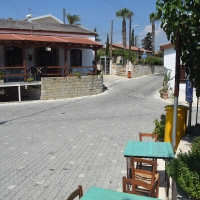
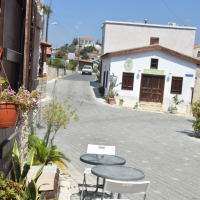
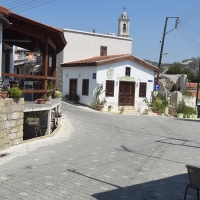
Enterprises
Useful Information
